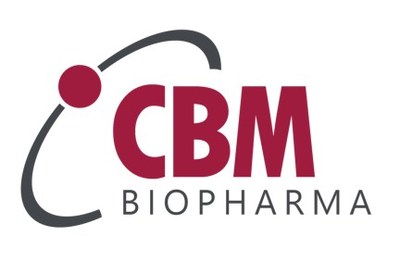CBM Bolsters Intellectual Property Asset Portfolio
NEW YORK, June 26, 2019 /PRNewswire/ — CBM BioPharma Inc. (“CBM”) today announced that the United States Patent & Trademark Office (USPTO) has issued a Notice of Allowance and Issue Fee Due in CBM’s patent application related to the treatment of pancreatic cancer.

CBM has received from the USPTO a Notice of Allowance for patent application 15/115,393. This application is licensed from the University of Texas by CBM. Once the patent issue fee is paid, the new patent will protect one of CBM’s lead drug candidates, Gem-DHA, a novel gemcitabine derivative intended for the treatment of pancreatic cancer. Preliminary data indicates that Gem-DHA is more effective than gemcitabine in mice pancreatic cancer models. This asset is to be sold to Spherix Inc. (NASDAQ: SPEX) as part of the previously announced Asset Purchase Agreement between CBM and Spherix. The transaction is subject to shareholder approval by Spherix shareholders and other customary closing conditions.
Anthony Hayes, Spherix CEO, stated, “I am very excited by the potential of this drug and especially by the data showing that Gem-DHA works better in reducing the growth of pancreatic tumors than the first-line chemotherapy drug gemcitabine. The data indicates that Gem-DHA preferentially concentrates itself in the pancreas relative to other organs, suggesting it may be a promising candidate for further trials in pancreatic cancer. We are constantly working to return value to our shareholders and this news is another data point that establishes the value of the CBM assets.”
About CBM
CBM is a private biotechnology company with a drug portfolio that focuses on the treatment of three cancers, acute myeloid leukemia (AML), acute lymphoblastic leukemia (ALL) and pancreatic cancer. CBM’s AML drug is a next generation targeted therapeutic designed to overcome multiple resistance mechanisms observed with the current standard of care.
Support for PR Statements:
—Gem-DHA is a novel gemcitabine derivative intended for the treatment of pancreatic cancer.
“The disclosed compounds have a nucleobase moiety and an omega-3 polyunsaturated fatty acid moiety, including pharmaceutically acceptable salt or prodrug thereof. Methods of using these compounds for the treatment of cancers such as pancreatic cancer are also disclosed.” (App. 15/115,393 at Abstract)
—Preliminary data indicate that Gem-DHA is more effective than gemcitabine in mice pancreatic cancer models.
“The results showed that Gem-DHA was more effective than the molar equivalent dose of gemcitabine HCl in inhibiting the growth of Panc-1-Luc tumors, but gemcitabine HCl at the dosing regimen used did not significantly inhibit the growth of the Panc-1-Luc tumors (FIG. 10A-C). In fact, by the end of the study, the average weight of tumors in mice that were treated with gemcitabine HCl was not significantly different from that in mice that were left untreated (FIG. 10B).” (App. 15/115,393 at Example 4)
—Gem-DHA works better in reducing the growth of pancreatic tumors than the first-line chemotherapy drug gemcitabine.
Repeating: “The results showed that Gem-DHA was more effective than the molar equivalent dose of gemcitabine HCl in inhibiting the growth of Panc-1-Luc tumors, but gemcitabine HCl at the dosing regimen used did not significantly inhibit the growth of the Panc-1-Luc tumors (FIG. 10A-C). In fact, by the end of the study, the average weight of tumors in mice that were treated with gemcitabine HCl was not significantly different from that in mice that were left untreated (FIG. 10B).” (App. 15/115,393 at Example 4)
—Gem-DHA preferentially concentrates itself in the pancreas relative to other organs.
“Similar to what was observed in tumor-bearing C.sub.57BL/6 mice (FIG. 16C), in healthy BALB/c mice, the highest percent of the injected Gem-DHA was detected in mouse pancreas (among the organs tested, FIG. 16D). Therefore, it appeared that Gem-DHA preferred to distribute in pancreatic tissues.” (App. 15/115,393 at Example 5)
Contact:
Investor Relations
hbehrmann@cbmbiopharmainc.com
![]() View original content to download multimedia:http://www.prnewswire.com/news-releases/united-states-patent–trademark-office-allows-patent-claims-for-cbm-biopharma-incs-patent-application-for-pancreatic-cancer-treatment-300875038.html
View original content to download multimedia:http://www.prnewswire.com/news-releases/united-states-patent–trademark-office-allows-patent-claims-for-cbm-biopharma-incs-patent-application-for-pancreatic-cancer-treatment-300875038.html
SOURCE CBM BioPharma, Inc.

News Provided by PR Newswire via QuoteMedia
